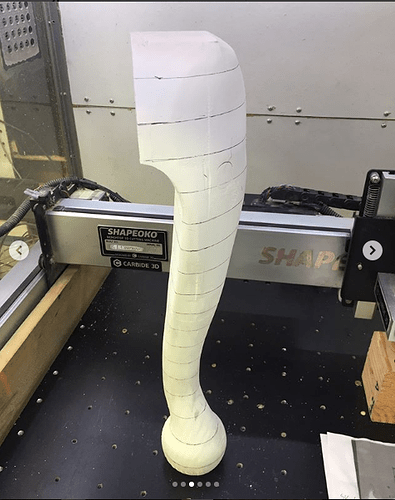It really depends.
Some materials will tell you vehemently it is time, because the tool will go from good to decent to crap to broken in minutes. You see the chips become less defined, hear the motor straining a bit more, smell the heat (from coolant, oils, or burning material), the finish gets a particular look, and so on, as the edges move from cutting to rubbing. Then the tool will break (or something else will, but usually the tool) and the work may or may not be recoverable.
Other materials, like many of the softer, more machinable woods, don’t give a clear indication unless you look closely, as the degradation is much slower. You don’t see it happening `in real time’. Look at the chips- are they torn off or are they cleanly cut? Is the finish good? Is the tool clearly rubbing? Are there burn marks on the work? Do you SEE the cutting edge (huh? See the edge? Yup. Do you SEE it. On a new tool, you don’t see the edge, other than by the transition from one surface to another. On a dull tool, the edge becomes visible as it breaks down)? Are there ANY chips in the cutting edges, or chipped corners on a square end cutter?
For a lot of applications, swap to a new one and compare. The difference, if any, will tell you a lot. The photo you posted isn’t clear enough to really evaluate the tool. The glare on the cutting edge near the end could indicate excessive wear (you see this as the relief on the edge wears down and you get a cylindrical nature there, especially on materials that burnish.polish the area as that happens), or it could just be a side effect of the lighting. That you say it has changed color is a pretty good cue that it has been overheated and may be done.
Looking at the edge under magnification is a good indicator, as well. The tool will wear from the first time it touches the work, so it takes some practice and experience to read the wear (some types of tooling I am good at, others I don’t have enough experience to read at all), but, as a general starting point, compare the cutting edges to each other at the working end to look for damage, and compare the cutting edges at the working and to the less used/unused edges at the top. Get in the habit of looking at new tooling when you put it in service so you can see what it `should’ be, as well as identify bad tools before ruining work with them.
I could really go into tool geometry and all that, but, if you are still awake, that would put you to sleep. There are really good sources – textbooks and manufacturers-- that go in to that with pictures and all, that re much better than I could do. You might try looking at Harvey tool and at Helical Solutions (just the first two on my bookmarks, as I have used both for tooling). There are a number of others.




